Small Satellites Demand Innovation in Reliability
- Posted by Harald Schone
- On November 21, 2019
- 0
The Challenge of too Little Information
- Most COTS components are high quality
- Long term reliability for highly scaled CMOS is a concern
- Radiation data is typically unknown
- Design, process material, construction, etc. Information is useful, but vague
- Heritage rarely applies to COTS
- No traditional lot traceability, frequent undisclosed design changes
Part Level Information Flow

Notional Design Flow vs. Reliabilty
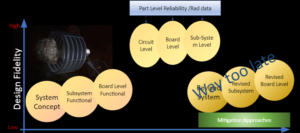
Complexity vs. Model Fidelity
Crossing Expert Domains

Lowest Level of Fidelity: COTS Radiation Guideline
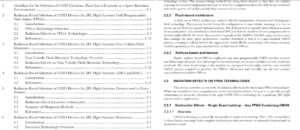
Rad Guidelines Codified in an Expert System

Lowest Level of Fidelity: COTS Reliability Guideline
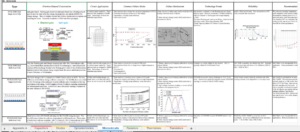
COTS Reliability Codified in Expert System
Automatically retrieves Intel Fab information to predict physics of failure

Predictive TID for Analog Devices: IMPACT
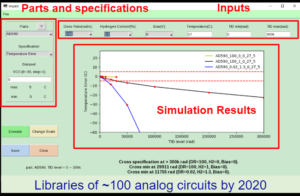
Predictive Rad Modeling at the circuit/board level
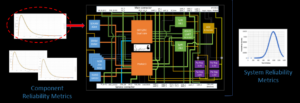
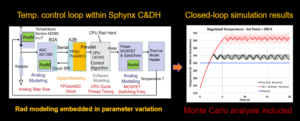
System Level Model-based Assurance
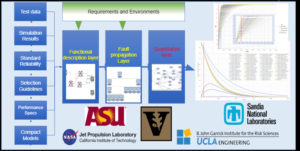
User Reports

Conclusion
The (Unexpected) Benefits of Modeling
- Modeling can be a powerful RHA tool
- Make use of vague information
- Expert knowledge can flow into model if properly weighted
- Effective way to collect information (standard format, metadata, C.C.)
- Enables information sharing
- Sharing piles of papers, lists of lessons learned or best practices is cumbersome and discourages adoption
- A guide through a design/development/Ops process
- Model fidelity needs to be adapted to stages in design
Latest posts by Harald Schone (see all)
- Small Satellites Demand Innovation in Reliability - November 21, 2019



0 comments on Small Satellites Demand Innovation in Reliability